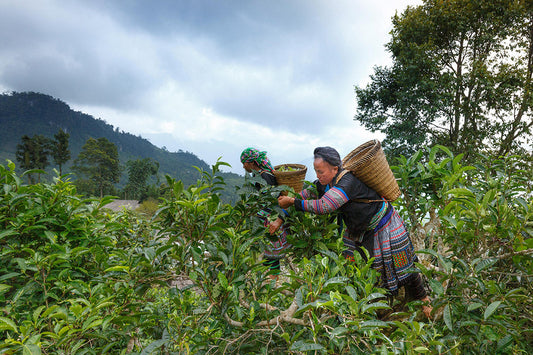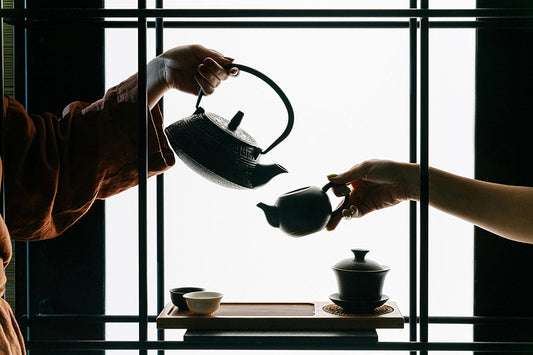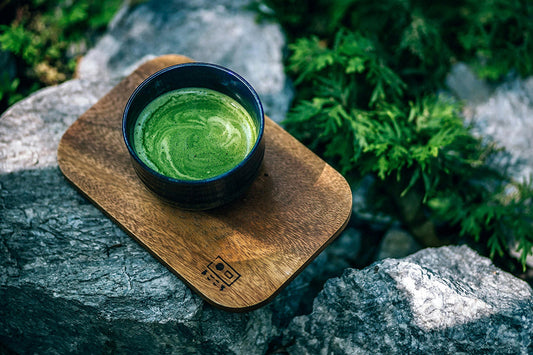Tea is more than just a beverage — it’s a global cultural experience steeped in tradition, health benefits, and flavor. But with so many types available, it’s natural to ask: what are the different types of tea? In this guide, we’ll explore the five main categories of tea, their characteristics, how they’re made, and why they deserve a place in your cup.
What Is Tea?
All true teas come from the same plant: Camellia sinensis. What makes them different is how the leaves are processed after harvest. Oxidation levels, drying techniques, and even the region in which the tea is grown all influence flavor, color, aroma, and caffeine content.
The main types of tea include:
- Green Tea
- Black Tea
- Oolong Tea
- White Tea
- Pu-erh Tea
Each of these categories has a rich history and unique processing style that produces distinct flavor profiles — from grassy and fresh to bold and earthy.
1. Green Tea
What is green tea?
Green tea is minimally oxidized, meaning the leaves are quickly steamed or pan-fired after picking to preserve their green color and natural antioxidants.
Flavor Profile:
- Light
- Grassy
- Slightly sweet or nutty
- Low astringency (in high-quality green teas)
Popular Varieties:
- Sencha (Japan): Bright, vegetal, and astringent.
- Dragon Well / Longjing (China): Toasty and smooth with a chestnut note.
- Matcha (Japan): Stone-ground powder, umami-rich, ideal for lattes and ceremonies.
- Gunpowder (China): Rolled pellets with a smoky, bold brew.
Health Benefits:
Rich in catechins, green tea is known for supporting metabolism, mental clarity, and cardiovascular health.
2. Black Tea
What is black tea?
Black tea is fully oxidized, giving it its dark color and robust flavor. It’s the most widely consumed type of tea globally.
Flavor Profile:
- Malty
- Bold
- Sometimes fruity or smoky
- Higher in caffeine than other types
Popular Varieties:
- Assam (India): Strong, malty, great with milk.
- Darjeeling (India): Often called the “Champagne of Teas”, it’s delicate and floral.
- Earl Grey (UK blend): Black tea infused with bergamot oil.
- Keemun (China): Smooth with a wine-like aroma.
Health Benefits:
High in flavonoids, black tea supports heart health, digestive comfort, and mental alertness.
3. Oolong Tea
What is oolong tea?
Oolong is partially oxidized — somewhere between green and black tea — which gives it a wide range of flavor notes. It’s one of the most complex tea types to produce.
Flavor Profile:
- Floral
- Buttery
- Roasted or fruity (depending on oxidation)
- Smooth finish
Popular Varieties:
- Tie Guan Yin (Iron Goddess): Floral, creamy, and aromatic.
- Da Hong Pao (Big Red Robe): Dark-roasted with a deep, mineral-rich flavor.
Health Benefits:
Promotes fat metabolism, supports skin health, and balances blood sugar.
4. White Tea
What is white tea?
White tea is the least processed of all teas. It’s made from the youngest tea buds and leaves, which are simply dried and sometimes lightly oxidized.
Flavor Profile:
- Delicate
- Mildly sweet
- Light and floral
Popular Varieties:
- Silver Needle: Made from only the buds, it’s soft, sweet, and luxurious.
- White Peony (Bai Mudan): Slightly stronger, with fruity and earthy undertones.
Health Benefits:
Loaded with antioxidants, white tea supports skin health, cellular protection, and relaxation.
5. Pu-erh Tea
What is pu-erh tea?
Pu-erh is a fermented tea from Yunnan, China. It’s aged — sometimes for years — to develop deep, complex flavors. There are two main types: raw (sheng) and ripe (shou) pu-erh.
Flavor Profile:
- Earthy
- Woody
- Smooth with age
- Often lower in bitterness
Unique Characteristic:
Pu-erh is the only tea that gets better with age, much like fine wine.
Health Benefits:
Supports gut health, reduces cholesterol, and aids in digestion after heavy meals.

Herbal Teas (Tisanes)
While not technically “tea” because they don’t come from the Camellia sinensis plant, herbal infusions are widely enjoyed and offer a world of flavor and function.
Popular Herbal Teas:
- Chamomile – calming and good for sleep.
- Peppermint – soothing and great for digestion.
- Rooibos – caffeine-free and full of antioxidants.
- Hibiscus – tart and refreshing, supports blood pressure.
Caffeine Content:
Most herbal teas are naturally caffeine-free, making them perfect for evening rituals.
Which Tea Is Right for You?
Choosing the right tea depends on your goals, taste preferences, and time of day.
| Mood/Goal | Recommended Tea |
|---|---|
| Morning Energy | Black tea or Matcha |
| Midday Focus | Oolong or Sencha |
| Evening Relaxation | White tea or Chamomile |
| Digestive Support | Pu-erh or Peppermint |
| Exploring Flavors | Oolong or Pu-erh |
You can also explore tea based on origin (China, Japan, India, Sri Lanka), processing method, or blending (e.g., chai, floral blends, citrus blends).
Final Thoughts: A World of Tea Awaits
From the grassy freshness of green tea to the earthy richness of pu-erh, each type of tea tells a story — of nature, culture, and craftsmanship. Whether you’re new to tea or a seasoned drinker, exploring the different types of tea opens the door to new rituals, flavors, and health benefits.
At TisforTea.com, we offer a curated selection of loose leaf teas, traditional brewing tools, and beginner-friendly guides to help you start your journey into the world of tea.
Ready to find your perfect cup?






